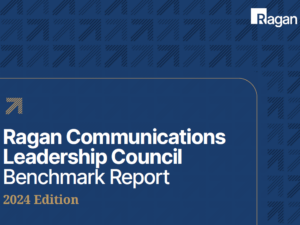How comms breakdowns in the supply chain contributed to the Boeing crisis
A lesson in why transparent, accurate measurement reporting is so critical.

You’ve likely heard about Boeing’s issues with its MAX 9 model airplane, stemming from a recent incident in the door of an Alaska Airlines-branded plane that lost its door mid-flight, which led to a ground stop for all of Boeing’s 737 MAX 9 model planes.
Unfortunately, this isn’t the first time the aerospace giant has had to ground this model of aircraft — Boeing halted all flights on the 737 MAX 9 in the late 2010s after two fatal crashes. But a new report from NPR raises a whole host of questions about how breakdowns in the supply chain might have impacted the aircraft in question.
Let’s look at how communicators can ensure partners report their measurement efforts to benefit from transparency and accuracy.
Defining the goals
Sometimes, a breakdown in comms within the supply chain can turn what seems like a small issue into a major problem. In the report, NPR describes communication problems between the manufacturers of the 737 MAX 9, Spirit AeroSystems, and Boeing, alleging that deliveries of plane parts are paramount to safety checks and a job done the right way. One Spirit employee was even quoted in the story as saying, “We’re having a pizza party because we’re lowering defects. “But we’re not lowering defects. We just ain’t reporting them, you know what I mean?”
To put it bluntly, this shouldn’t happen. But the fixes to a situation like this one lie within the internal comms practice, specifically with how data on the supply chain is reported, and measured, and what channels it travels through. But before any of that can happen, comms has the power to set out standards for measurement reporting with partners.
The first step in improving data measurement and the comms along with partners centers on defining your objectives. This past summer, Ragan’s Justin Joffe recommended that communicators set up objectives for measurement. These include:
- Who: This reflects your stakeholder groups.
- What: This represents the goal you seek to accomplish.
- When: This defines the timeframe by which the objective should be reached.
- How much: This represents the degree to which your “what” may change.
Let’s look at this in the context of the report about broken-down communication in the supply chain between Spirit AeroSystems and Boeing. The stakeholders here are relevant employee cohorts at each of the two companies, but let’s not forget the employees of the airlines that use Boeing planes and the general flying public. The “what” needs to be safely creating airline parts — and the “when” should be however long it takes to efficiently and safely deliver parts from manufacturer to airline company.
The steps and back and forth between each stakeholder set in your supply chain need to be both measurable and easy to refer to. When, according to the NPR piece, statements from Boeing say that the process hasn’t “been up to engineering standards” and that they’re in close contact with Spirit over the issues identified in the supply chain, it seems like a step in the right direction. However, a lack of accountability and measurable communication along the way caused this problem in the first place. Unfortunately, Ragan’s research shows that this is an all too common issue.
Collecting, reporting and communicating information the right way
In the NPR report, an employee of Spirit said he was fired for pointing out flaws in aircraft parts. The employee described a toxic work culture that prioritized speed over communication and safety. Simply put, that’s not a way to achieve either success or sustainability. Instead, Boeing and Spirit could take a step back, look at how their supply chain process functions and who is accountable for sharing what, and reformulate their plan with an emphasis on proper data collection and reporting that uses the basic objectives mentioned above a a framework.
For a communicator in the supply chain, that means creating narratives about measurement that are tangible for stakeholders on both ends. That might also mean using distinct channels to reach different stakeholders along the chain, depending on where they are most active
If Spirit had a process for reporting these issues as they happened, and instituted a dialogue with Boeing about how to remedy them, this situation could have been avoided entirely. Not having proper comms infrastructure and reporting processes for problems created this issue, and hopefully, both sides will learn from it.
Remember that your supply chain partners are just that — partners — not external stakeholders who should have any information withheld from them. Frequent, clear, and transparent communication is necessary to keep the supply chain moving along smoothly while minimizing the risk and potential reputational damage that can happen. Ignoring this critical component of organizational operations can lead to publicity disasters like the one Boeing and Spirit are experiencing right now, and can even put lives in danger.
Additionally, organizations need to consider that other agencies, like the federal nonprofit National Transportation Safety Board (NTSB), are also partners in the accountability process. Though the NTSB only makes recommendations and does not enforce regulations, the reporting and communications chain should consider their recommendations and take them to heart.
By instituting the right measurement, reporting and communication measures in the future, hopefully both parties can put this issue behind them. Your comms and measurement efforts on the supply chain can not only serve to make processes move smoother, but can also minimize risk and protect reputation. .








Good report and story, but missing Alaska Airlines’ role in how the safety alerts were handled (or not?)
The NTSB is not a regulatory agency. The National Transportation Safety Board is an independent federal agency charged with investigating all civil aviation accidents in the U.S., determining the probable cause of those accidents, and issuing safety recommendations to any organization in the position to bring about safety improvements needed to prevent the recurrence of those accidents.
The NTSB also investigates significant accidents on our railways, highways, on water, and those involving pipelines. (ntsb.gov)
Thank you for catching this oversight, Colleen – we have edited this story to provide better context around the NTSB’s work.